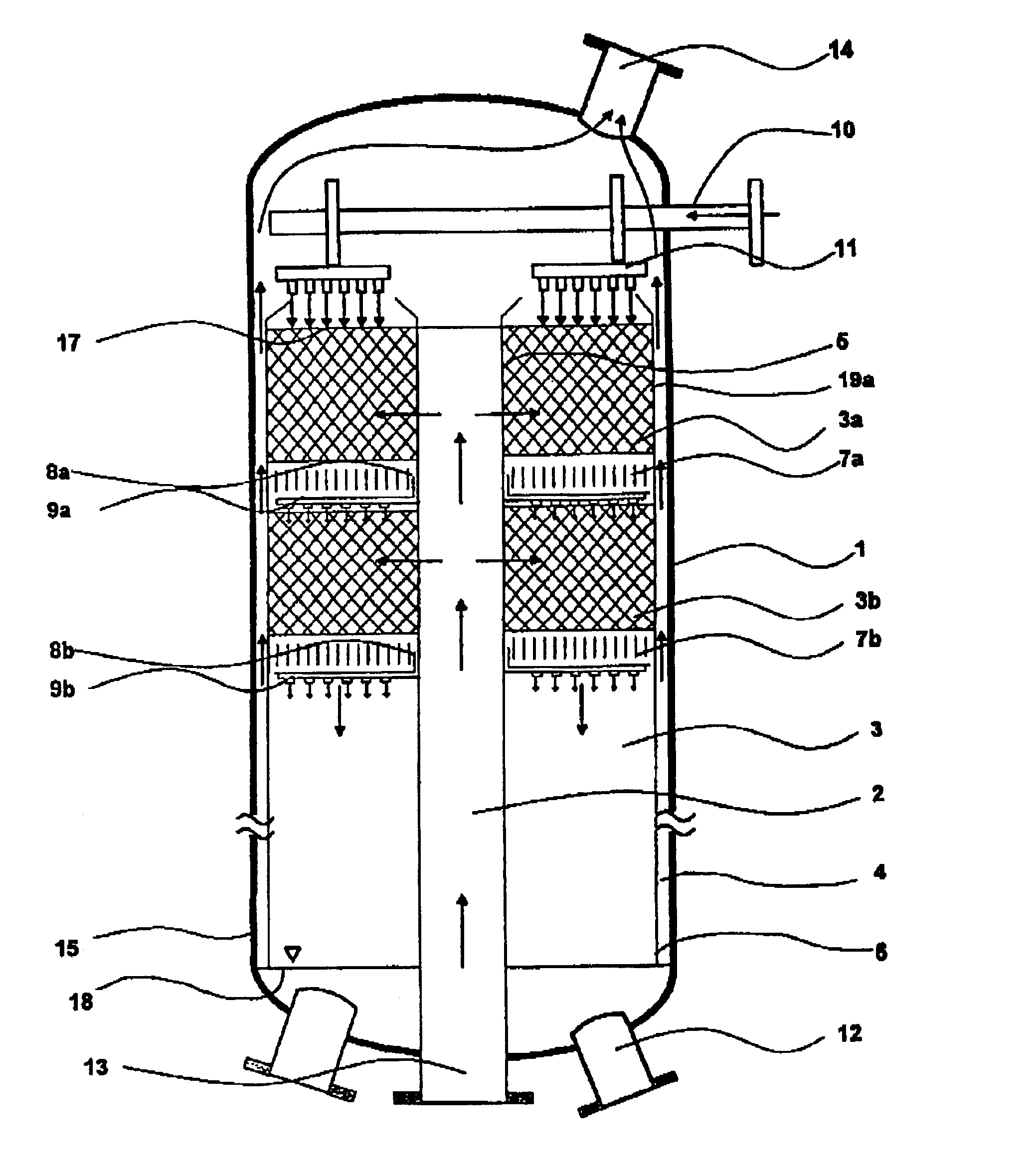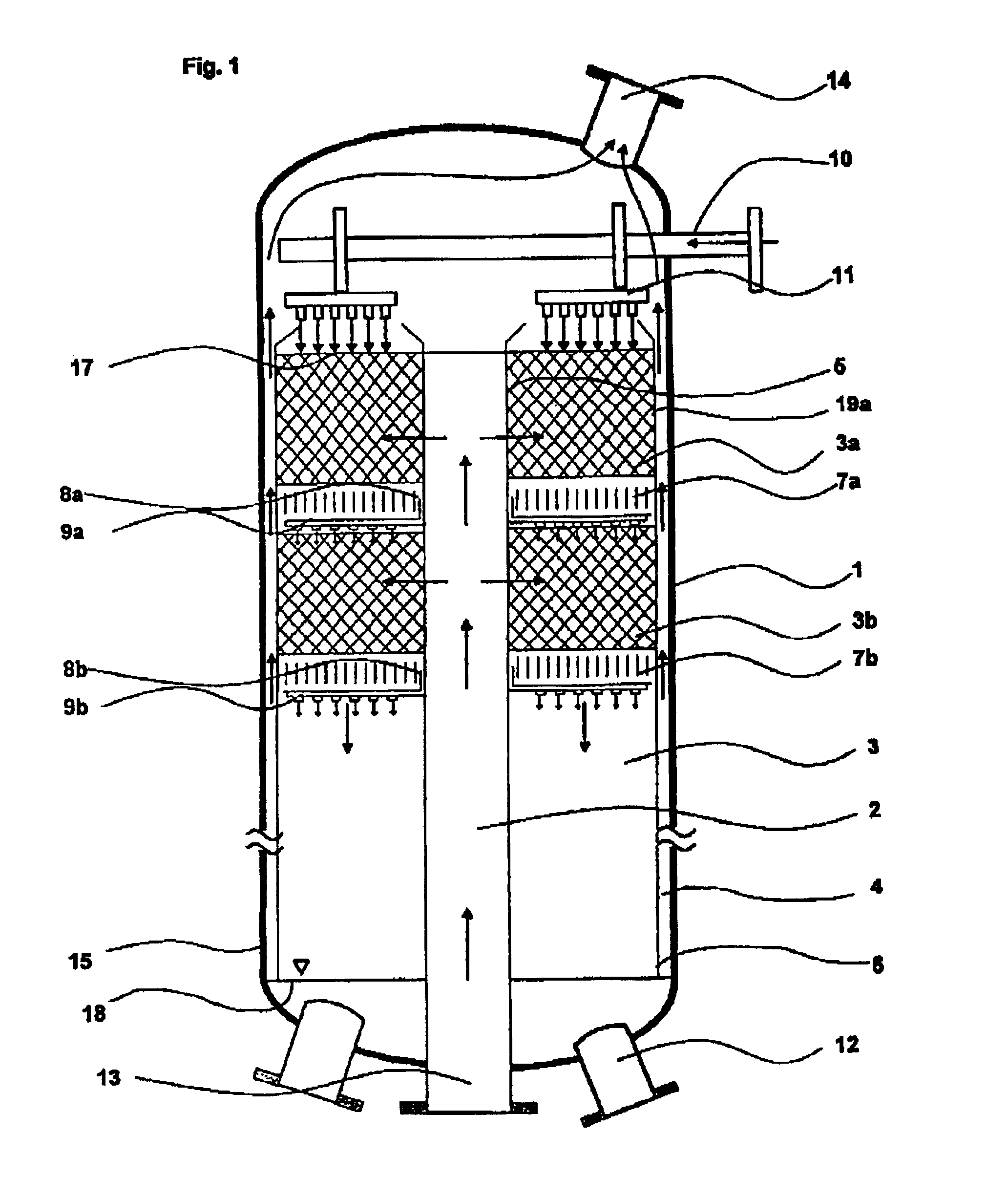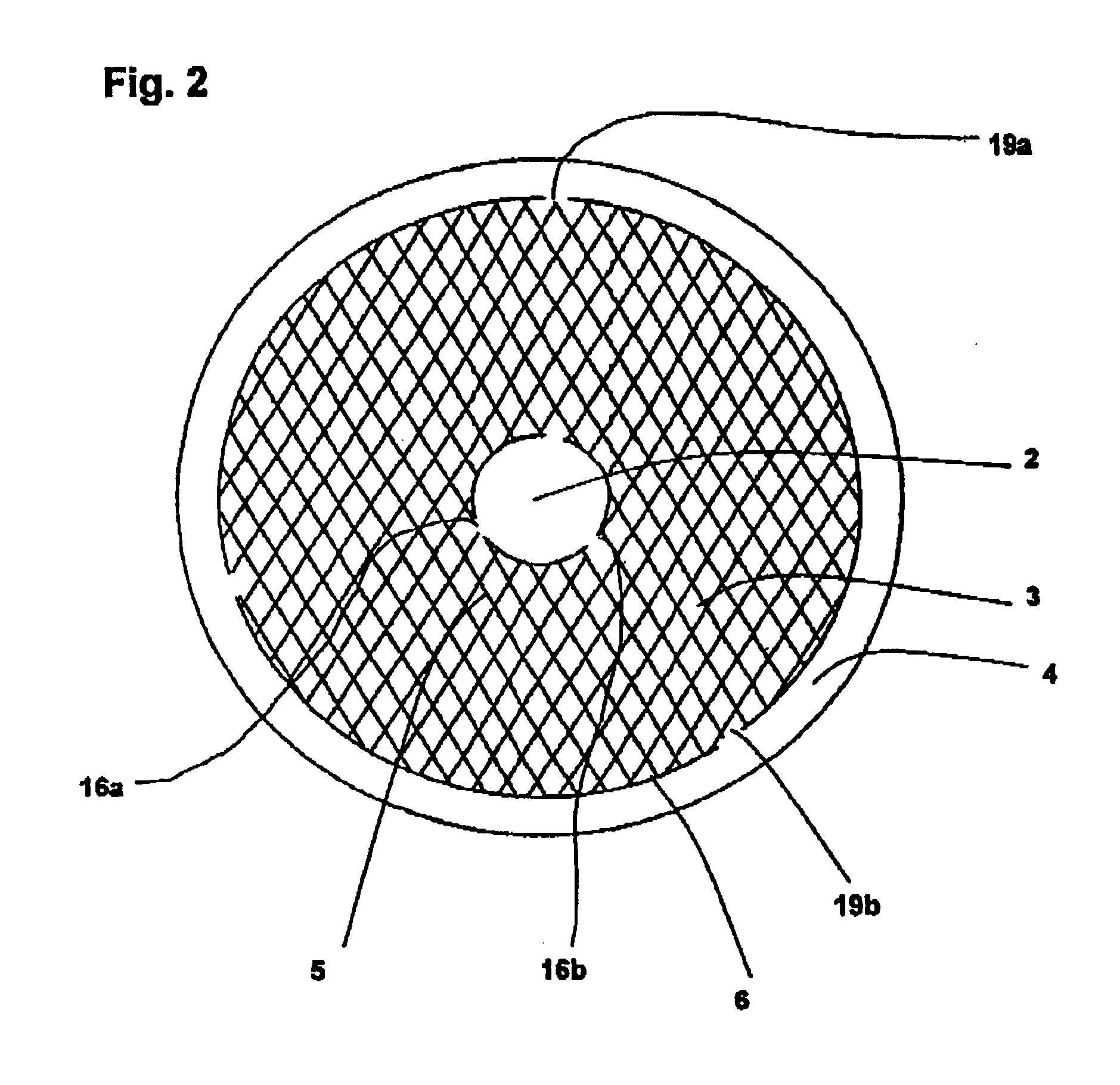Preparation of hydrogen peroxide from hydrogen and oxygen
a technology of hydrogen peroxide and hydrogen peroxide, which is applied in the field of hydrogen peroxide preparation from hydrogen and oxygen, can solve the problem of 180° deflection of the flow direction in very small observation windows, and achieve the effect of preventing the decomposition of hydrogen peroxid
- Summary
- Abstract
- Description
- Claims
- Application Information
AI Technical Summary
Benefits of technology
Problems solved by technology
Method used
Image
Examples
production example 1
CATALYST PRODUCTION EXAMPLE 1
5 m3 (gross volume as poured) of steatite spheres having a diameter of from 1.8 to 2.2 mm were impregnated on a box filter with a solution of 15 kg of tin(II) chloride and 30 l of hydrochloric acid in 3 m3 of water. The solution was allowed to seep through the spheres and the bed was washed with 5 m3 of water. A solution of 1000 g of palladium chloride and 5 l of concentrated hydrochloric acid in 3 m3 of water was subsequently allowed to seep through the steatite spheres, the filtrate was collected and the bed was once again rinsed with water. The procedure was repeated one more time. The spheres were then dried overnight at 50° C. and 100 mbar.
The spheres which had been activated in this way were then placed in a double-walled tube which was connected to a pump for circulating liquid. The jacket of the tube could be heated by means of hot / warm water. After addition of a solution of 273 kg of sodium hypophosphite, 616 kg of ammonium chloride and 911 l of...
production example 2
CATALYST PRODUCTION EXAMPLE 2
The catalyst was produced by a method analogous to that of example 1, but the steatite spheres used had a diameter of from 1.0 to 1.5 mm.
example 1
A plant as shown in FIG. 3 was used. The reactor had an external diameter of 2.6 m and a height of 23.6 m. The reaction space had an external diameter of 2.3 m, an internal diameter of 0.5 m and extended from above the bottom region (1.9 m from the lower end of the reactor) to below the top region (2.2 m from the upper end of the reactor). The catalyst volume was 49 m3. The reaction space was made up of 16 reaction zones with 15 cooling zones located between them. The reaction zones were filled with the catalyst produced as described in catalyst production example 1. A liquid stream A which had been preheated to 43° C. was introduced via a liquid distributor and distributed uniformly over the surface of the uppermost reaction zone. The liquid trickled through the uppermost reaction zone and took up the hydrogen peroxide formed over the catalyst. The liquid was held up in the first cooling zone and cooled by indirect heat exchange. After leaving the cooling zone, the liquid was distr...
PUM
| Property | Measurement | Unit |
|---|---|---|
| angle | aaaaa | aaaaa |
| aspect ratio | aaaaa | aaaaa |
| particle size | aaaaa | aaaaa |
Abstract
Description
Claims
Application Information
 Login to View More
Login to View More - R&D
- Intellectual Property
- Life Sciences
- Materials
- Tech Scout
- Unparalleled Data Quality
- Higher Quality Content
- 60% Fewer Hallucinations
Browse by: Latest US Patents, China's latest patents, Technical Efficacy Thesaurus, Application Domain, Technology Topic, Popular Technical Reports.
© 2025 PatSnap. All rights reserved.Legal|Privacy policy|Modern Slavery Act Transparency Statement|Sitemap|About US| Contact US: help@patsnap.com



